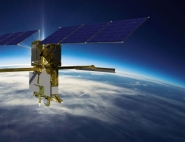Applications
SWOT has received funding from the French government’s PIA future investment programme on account of its significant potential applications.
The SWOT-Aval early adopters programme was put in place to ready for, support and ease uptake of SWOT data and thus foster a downstream sector in the two fields of investigation covered by the mission: oceanography, where a vibrant downstream sector already exists, and hydrology, where it still remains to be structured.
The SWOT-Aval programme comprises four strands:
- Thematic disciplines: to specify and validate value-added products and services for oceanography and especially hydrology, where SWOT is expected to afford many advantages
- Methodology: to define and develop tools to ease uptake of future SWOT imagery and data
- Applications: to promote tools and develop and associate service providers with the development of applications for oceanography and above all hydrology
- Outreach: to inform, raise awareness, train and help stakeholders to grasp the opportunity of creating new products and services; and to support fundamental and applied research
Oceanography
The advanced imagery generated thanks to SWOT’s Ka-band radar interferometer KaRIn is set to significantly enhance observation of ocean topography and surface waters. SWOT is able to acquire measurements of sea surface height with a spatial resolution 10 times better than the current generation of altimetry satellites. That kind of performance will enable scientists to study the global ocean circulation, eddies and coastal currents at scales down to 10 km.
Closer study of ocean dynamics directly impacts the reliability and value of forecasts of sea level rise at global and regional scales, of cyclones and more broadly climate predictions. It will also support applications in all blue sectors of the economy, like navigation aids and sea rescue, as well as the study of coastal erosion, and assist communities in improving preparedness for the severe weather and climate events that are becoming more frequent and intense as a result of climate change.
Hydrology
SWOT also heralds a revolution in water resource management and hydrology. It will directly deliver measurements of the height of water bodies covering a surface area of more than 6 hectares, and the height and discharge of rivers spanning more than 100 metres.
SWOT will thus allow us to measure changes in water stocks around the globe, to track variations in the flow of major water courses and help to improve flood forecasting.
Using SWOT data with information from other sources, we will be able to improve current water management services and create new ones. SWOT data combined with other satellite observation data, weather forecasts and hydrological and hydraulic river models will also help to significantly improve preparedness for extreme events like flooding.
The hydrology applications of SWOT cover the following domains:
- Enhanced understanding of the water cycle
- Better flood modelling
- Hydroelectric power generation
- River navigation aids
- Cross-border water management
- Freshwater for agriculture, industry and cities
- Integrated estuary management
- Prevention of epidemics


